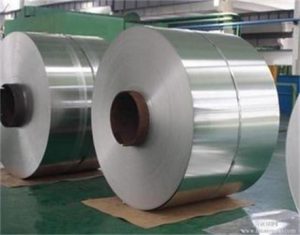The Difference Between Carbon and Stainless Steel
Selecting an appropriate type of steel for a project is one of the most important decisions to make. However, before deciding between individual grades, you first have to decide what type of steel to use, such as carbon steel or stainless steel. To help, this article will discuss the difference between carbon and stainless steel.
The difference between carbon and stainless steel include:
- Corrosion Resistance
- Mechanical Properties
- Appearance
- Cost
Corrosion Resistance
The most obvious difference between carbon steels and stainless steels is the ability to resist corrosion. Stainless steels, as the name implies, are generally the more corrosion resistant of the two steels. Both carbon steels and stainless steels contain iron which oxidizes when exposed to the environment, creating rust. The added chromium in stainless steel makes it more corrosion resistant than carbon steels. The chromium will attach itself to oxygen more readily than iron. When the chromium attaches to the oxygen, it creates a chromium oxide layer which protects the rest of the material from degradation and corrosion. Carbon steel does not typically have enough chromium to form this chromium oxide layer, allowing oxygen to bond with the iron which results in iron oxide, or rust. So if corrosion resistance is a key factor, stainless steel is the way to go.

Mechanical Properties
It is difficult to make sweeping statements about the differences in mechanical properties between carbon steels and stainless steels because of the many different types and grades of each. Stainless steels can be more ductile than carbon steels because they usually have higher amounts of nickel. However, there are very brittle grades of stainless steel as well, such as the martensitic grades. Carbon steels with very low amounts of carbon may not match tensile strengths of some stainless steels due to the alloying elements that many stainless steel grades contain which increase its strength. However, if there is enough carbon (typically at least 0.30% by weight) in the carbon steel, it is more readily heat treated than an austenitic stainless steel.
Appearance
If the job requires an aesthetic appeal, the appearance of the metal must be considered. Stainless steels with particular finishes are generally preferred when cosmetic appearance is a factor. Although both can be sanded and polished to have a bright, shiny look, carbon steel requires a clear coat or paint rather quickly after the polishing process. If it is not applied, the carbon steel will begin to tarnish and eventually rust. Also, if stainless steel is scratched, it will retain its luster in the scratched area, while a painted piece of carbon steel would need to be repainted or it will be subject to corrosion.

Cost
Another important consideration is the cost difference between carbon steels and stainless steels. Although different grades have varying costs, stainless steels are generally more expensive than carbon steels. This is due mostly to the addition of a variety of alloying elements in stainless steel, including chromium, nickel, manganese, and others. These additional elements all add up to an increased cost over carbon steels. Carbon steel, on the other hand, is mostly composed of relatively affordable iron and carbon elements. If you’re working with a tight budget on your next project, carbon steel might be the best option.
How to Choose?
Choosing between carbon steel and stainless steel for a particular job will involve weighing all of these factors and careful consideration. If the metal is going to be hidden from sight, there is no sense in spending extra money on stainless steel strictly for its appearance. However, if it is going to be hidden from sight but subject to a corrosive environment, stainless steel may actually be the best option. In the end, the choice will depend on the specifics of the job or project.
See more: How Is Stainless Steel Made?
If you want to import GOOD QUALITY Steel from Vietnam, please contact us at:
– Email: datdq@namkimgroup.vn
– Mobile/Whatsapp/Wechat/Line/Viber: +84 973 765 730
– Website: https://steelvn.vn/

